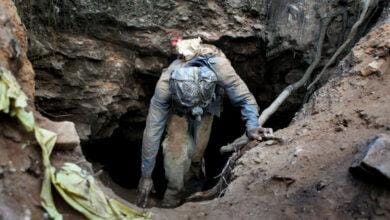The Wits Mining Institute (WMI) has unveiled that it is assisting the mining industry to develop a raw critical minerals catalogue aimed at transforming the mining landscape in South Africa.
During his keynote address at the annual WMI seminar held on 28 and 29 September, WMI director Glen Nwaila noted that these materials, essential for technologies ranging from smartphones to renewable energy storage batteries, are often scarce and geologically specific. Despite its wealth of these resources, South Africa has lacked a centralised repository of this crucial information – until now.
“The catalogue not only fills this gap, but also aligns with the government’s efforts to create the country’s first Critical Raw Materials Strategic Plan, led by the Council for Mineral Technology, known as Mintek. We are now creating building blocks of a catalogue that will be used as evidence layers for a CRM policy formulation,” he stated.
Innovating for the future
Meanwhile, the role that technology and innovation play in this and other transformative initiatives in the mining industry, were also highlighted at the conference. “We are on the cusp of a new era in mining, not only addressing the challenges faced by the industry, but also setting new standards for efficiency and sustainability,” noted Nwaila.
The WMI, in collaboration with industry partners, including Accenture, Ramjack Technology Solutions, Schauenburg Systems and Datamine, demonstrated a range of cutting-edge technologies at the two-day seminar, aimed at enhancing mining operations. These included synchronised GPS systems that allows real-time analysis of geological stress structures, automated ore classifiers, smart vests equipped with sensors providing vital data on miners’ safety and environmental conditions, and developments in waterless mining.
“We’re not suggesting that mining can occur without water entirely. Rather, we are raising awareness about techniques and natural methods that assist us in reducing water usage wherever possible,” he said. He highlighted the WMI’s focus was on finding solutions within the existing constraints and using innovative approaches to reduce the industry’s environmental footprint.
Also highlighting the role of innovation in the mining industry, Sibanye-Stillwater Innovation Head Alex Fenn stated during his keynote address that while disruption seemed to have become the norm in the mining industry, it was also leading to areas of technological advancement that would herald many benefits to the industry.
Fenn emphasised tools such as 3D printing and its role in decarbonising the supply chain – enabling on-site spare parts manufacturing and addressing logistical challenges in remote mining areas. He also discussed the critical importance of wireless communication in the digital progression of the industry, enabling efficient operations even in remote locations. “It’s difficult to propagate signals underground, but with wireless technology evolving, this will be enabled,” he said.
He further acknowledged the “transformative power of large language models”, particularly in data management and decision-making processes. He noted, however, that some challenges remained. “AI can streamline operations and enhance efficiency, but it is limited in retaining valuable tacit knowledge within the industry,” he said.
Fenn also noted that the mining industry could draw from technologies such as blockchain, “which is often overlooked in terms of its true capability to decentralise decision-making”, as well as space innovation, “which offers possibilities in terms of network deployment and global connectivity”.
Creating a more sustainable industry
During his keynote speech, Dr Tsakani Mthombeni, executive: sustainability development at lmplats, noted that mining companies were recognising the importance of long-term sustainability within the communities that these companies were operating in.
“Sustainability should extend beyond mere compliance with regulations and laws,” said Dr Mthombeni. “Instead, it involves adopting approaches such as inclusive procurement, prioritising local businesses, and actively participating in the development of the communities in which we operate.
“This is further assisted by innovative thinking. Working with institutes like the WMI, Implats seeks to find practical solutions that enhance sustainability, engage with local communities, and create new markets and economies.”
While South Africa and its mining companies were struggling with constraints in power supply, Seriti Resources CEO Mike Teke highlighted the critical intersection between sustainable solutions, such as clean energy developments, and fossil fuels. “The world is transitioning,” Teke stated during the seminar proceedings, “and as it does, we must accept that fossil fuels play a significant role in our energy needs. We cannot ignore its contributions to our economy and society.”
He added that the transition from traditional fossil fuels to renewable sources of energy was a gradual process requiring meticulous planning, inclusivity, and pragmatic decision-making. “A balanced approach considering both fossil fuels and clean energy is essential for a successful just energy transition,” he said.
Looking to the future, the WMI emphasised that research and development will continue to play a significant role in paving the way for a more sustainable mining industry. “The seminar showcased not just technological advancements but also the spirit of collaboration that fuels this innovation,” said Nwaila. “With these strides, we are confident in steering the mining sector toward a more sustainable and prosperous future.”











